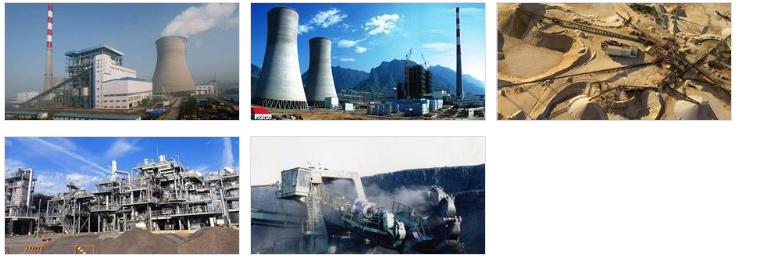Czech
- Afrikaans
- Albanian
- Amharic
- Arabic
- Armenian
- Azerbaijani
- Basque
- Belarusian
- Bengali
- Bosnian
- Bulgarian
- Catalan
- Cebuano
- Corsican
- Croatian
- Czech
- Danish
- Dutch
- English
- Esperanto
- Estonian
- Finnish
- French
- Frisian
- Galician
- Georgian
- German
- Greek
- Gujarati
- Haitian Creole
- hausa
- hawaiian
- Hebrew
- Hindi
- Miao
- Hungarian
- Icelandic
- igbo
- Indonesian
- irish
- Italian
- Japanese
- Javanese
- Kannada
- kazakh
- Khmer
- Rwandese
- Korean
- Kurdish
- Kyrgyz
- Lao
- Latin
- Latvian
- Lithuanian
- Luxembourgish
- Macedonian
- Malgashi
- Malay
- Malayalam
- Maltese
- Maori
- Marathi
- Mongolian
- Myanmar
- Nepali
- Norwegian
- Norwegian
- Occitan
- Pashto
- Persian
- Polish
- Portuguese
- Punjabi
- Romanian
- Russian
- Samoan
- Scottish Gaelic
- Serbian
- Sesotho
- Shona
- Sindhi
- Sinhala
- Slovak
- Slovenian
- Somali
- Spanish
- Sundanese
- Swahili
- Swedish
- Tagalog
- Tajik
- Tamil
- Tatar
- Telugu
- Thai
- Turkish
- Turkmen
- Ukrainian
- Urdu
- Uighur
- Uzbek
- Vietnamese
- Welsh
- Bantu
- Yiddish
- Yoruba
- Zulu
Telephone: +86 13120555503
Email: frank@cypump.com
Lis . 02, 2024 08:02 Back to list
best pump for slurry
Choosing the Best Pump for Slurry Applications
When it comes to handling slurry—thick mixtures of solids and liquids—selecting the right pump is crucial for efficient and effective operation. The unique properties of slurry can significantly affect the performance of the pump, making it essential to choose a model specifically designed to handle these challenging materials. Here we explore the key considerations in selecting the best pump for slurry applications, focusing on some popular options available in the market.
Understanding Slurry Properties
Before diving into pump selection, it's important to understand the properties of the slurry. Slurries can vary widely in viscosity, density, and particle size. These factors can influence the flow characteristics and the wear and tear on the pump components. For instance, slurries with larger solids or higher concentrations often require more robust pumps to prevent blockages and to ensure reliable operation.
Types of Pumps Suitable for Slurry
1. Centrifugal Pumps These are the most common type of pumps used for transporting slurries. However, not all centrifugal pumps are suitable for slurry; those designed specifically for this purpose usually have wider impeller passages and wear-resistant materials to handle the abrasive nature of solid particles.
2. Positive Displacement Pumps This type includes gear pumps and diaphragm pumps, which can handle thick and viscous slurries effectively. They work by trapping a fixed amount of slurry and forcing it through the discharge. Positive displacement pumps are ideal for applications where a consistent flow rate is needed, regardless of the pressure.
best pump for slurry

3. Submersible Pumps These are typically used in applications where the slurry source is at a lower elevation, such as in pits or tanks. Submersible pumps are designed to function while submerged in the slurry, often featuring robust housing and protective coatings to enhance durability.
4. Air-Operated Double Diaphragm (AODD) Pumps AODD pumps are excellent for handling slurries with a high solid content. They are known for their ability to pump viscous and abrasive fluids without causing damage, as well as their portability and ease of maintenance.
Key Considerations in Pump Selection
When selecting a pump for slurry applications, several factors should be considered
- Particle Size and Abrasiveness Choose a pump that can deal with the specific size and hardness of the solids in the slurry. - Flow Rate and Pressure Requirements Determine the required flow rate and pressure conditions for your application to select an appropriately sized pump. - Material Compatibility Ensure that the pump materials can withstand the chemical and physical properties of the slurry to prevent premature wear and corrosion. - Maintenance and Accessibility Consider the ease of maintenance and access to the pump, as some types may require more frequent servicing due to wear from abrasive materials.
Conclusion
Selecting the best pump for slurry applications involves understanding the specific characteristics of the slurry, as well as the capabilities of different pump types. By carefully assessing the factors outlined above and choosing a pump designed for handling such challenging materials, you can ensure optimal performance and longevity, ultimately reducing downtime and maintenance costs. Investing in the right slurry pump can enhance operational efficiency and reliability in your processes.
-
Reliable Non-Clog Sewage Pumps with GPT-4-Turbo Tech
NewsAug.04,2025
-
High-Performance Air Pumps for Sand & Gravel | Efficient Transport
NewsAug.03,2025
-
ISG Series Vertical Pipeline Pump - Chi Yuan Pumps Co., LTD.|Energy Efficiency, Corrosion Resistance
NewsAug.03,2025
-
ISG Series Pipeline Pump - Chi Yuan Pumps | Energy Efficiency&Compact Design
NewsAug.03,2025
-
ISG Series Vertical Pipeline Pump - Chi Yuan Pumps Co., LTD.|High Efficiency, Low Noise, Durable
NewsAug.02,2025
-
ISG Series Vertical Pipeline Pump - Chi Yuan Pumps | High Efficiency, Low Noise
NewsAug.02,2025










